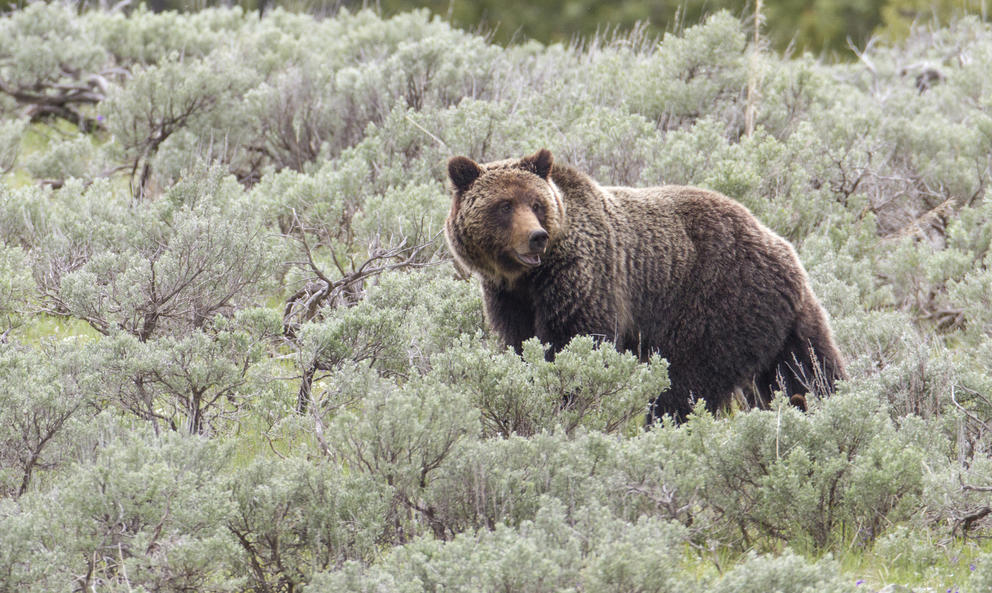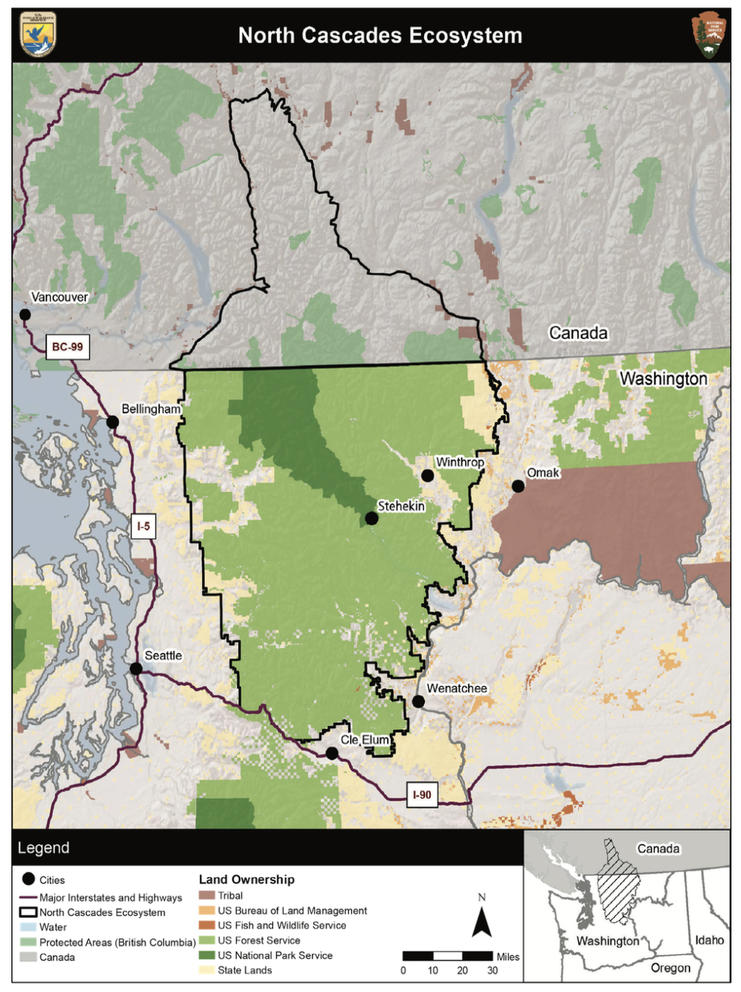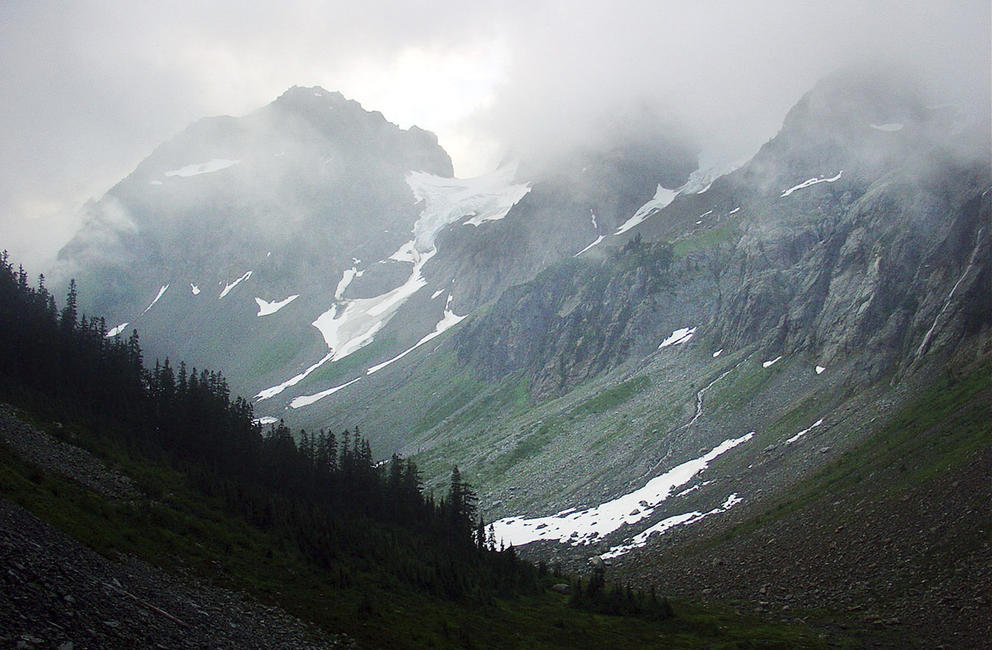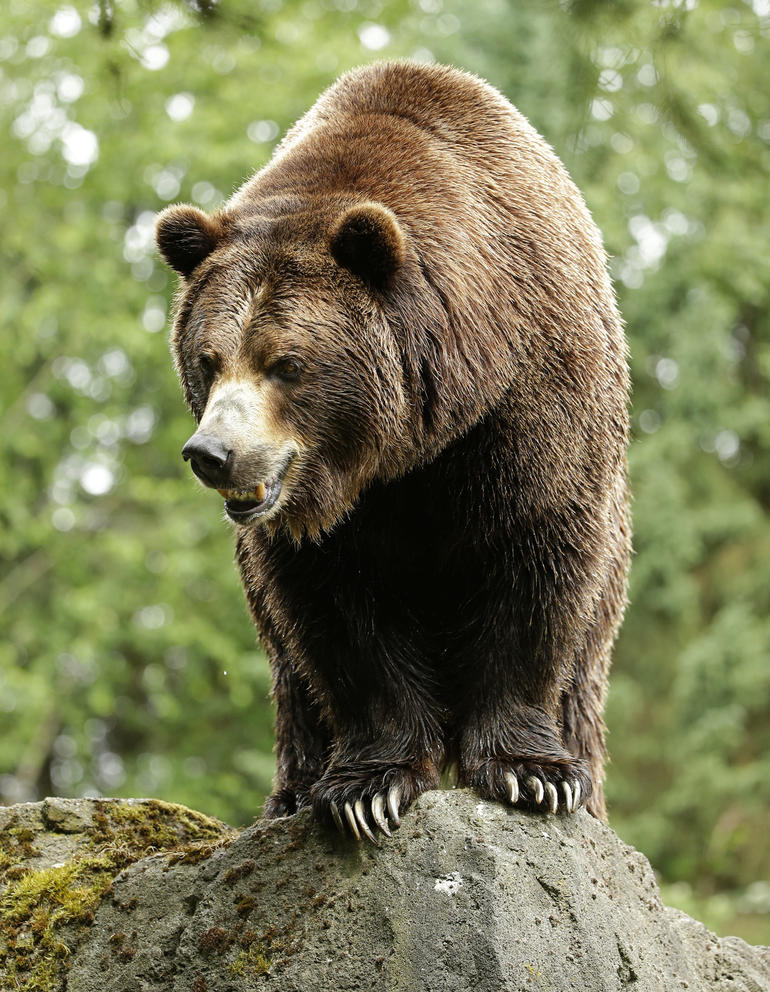The U.S. Fish & Wildlife Service and the National Park Service, however, might change that.
After many years of contentious stops and starts, federal officials are again pursuing a recovery study exploring how to reintroduce grizzly bears to the North Cascades, leading to a new wave of questions about what grizzly reintroduction would mean for animals and people.
Hundreds of thousands of people have moved to Washington since the federal government first announced it would attempt to recover grizzly bears nationwide four decades ago. Many more people are playing and living in the woods, and they are likely unaware that they may soon share the outdoors with more than a handful of grizzlies.
“These conversations have been going on for decades. But there's people that have no idea, right? And so it's good to get everybody back up to the same conversation level,” said Dr. Jason Ransom, a wildlife biologist for the North Cascades National Park Service Complex and the project lead for the organization’s grizzly recovery effort.
Crosscut asked Ransom and Scott Schuyler, an Upper Skagit Indian Tribe elder who serves as the tribe’s policy representative for cultural and natural resources, some of the biggest questions about recovering grizzlies — and what we can do to be better neighbors to the wildlife that’s already here.
Do we even need grizzlies in the North Cascades?
Many people think so.
The bears have long been culturally and spiritually important to Indigenous peoples around the Salish Sea.
“From our perspective, our history here dates back roughly 10,000 years, and our ancestors co-existed with grizzly bears, with wolves,” Schuyler said. “And the Tribe feels that the ecosystem is not complete anymore because we’ve lost so many of these different species.”
Biodiversity is the other huge consideration. Species-rich ecosystems tend to be more resilient.
“Some species win when things change, some species lose when things change. The only way it all keeps functioning is to have the biodiversity that can ebb and flow with that. You don't want all your eggs in one basket, you want a lot of different eggs,” Ransom said.
Many species depend on grizzlies, making them a keystone species, a status also attributed to salmon and whitebark pine. They help other species survive in many ways, Ransom said. They’re excellent at helping plants spread through the region and they aerate soil as they root for food, to name a couple perks of having them around.
Then there’s the question: What exactly are we restoring the North Cascades to? Ecosystems change all the time, which means restoring them to their “natural state” is a subjective art, especially with climate change expected to affect so many ecosystems in so many ways. But given how significantly humans affected species after colonization, many scientists tend to use pre-colonial ecosystems as the baseline for recovery standards. Some grizzly advocates, like the North Cascades Conservation Council, ascribe moral weight to the recovery.
“We have a poor track record of letting species slip away from us. And right now I think we still have the ability to do something,” Schuyler said.
I spend a lot of time in and near the North Cascades. If grizzly bears recover there, how likely is it that I’ll run into them?
Extremely unlikely, Ransom said.
It’s possible that government agencies and their partners could reestablish a baseline of 25 bears in the North Cascades over the next decade. They would likely capture bears in Canada or Montana and bring them to Washington. Even if the Washington population reached 30 bears, that would still leave only one bear per 386 square miles, Ransom said, and they’d likely each be somewhere remote and hard to get to. In comparison, ecosystems with healthy grizzly bear populations, like Montana’s Northern Continental Divide Ecosystem, have only about 30 bears per 386 square miles.
Grizzlies reproduce slowly, so it will take a while before anyone has a reasonable chance of spotting a bear, Ransom said.
In the Northern Continental Divide Ecosystem’s recovery zone, grizzlies have reached population levels an ecosystem can reasonably support, Ransom said. Some bears are moving closer to places where people are, so communities are having conversations about where we tolerate bears and manage a healthy population — a conversation Ransom said is “beyond our lifetimes” in the North Cascades. According to a Nov. 14 notice, agencies are seeking to create a population of approximately 200 grizzlies within 60 to 100 years.
It’s not impossible to run into a grizzly bear in the North Cascades today, and people recreating in the backcountry should be prepared for bears every time they go. Scientists don’t know how many bears there are, but Ransom hazards that “a couple” may still be around, living in what is already a designated recovery area.
“If they are there, they're doing what grizzly bears love to do, which is live in remote places far away from people,” he said.
Where will the bears come from, and how will they get here?
To create a population of bears, grizzlies will need to be moved from elsewhere — ideally places that have bears to spare.
To give these newcomers their best shot at life, scientists would try to bring them from similar ecosystems where they eat similar things. The diet of inland bears is almost entirely plants, unlike coastal bears.
“These are not the salmon-eating bears of Fat Bear Week,” Ransom said, referencing the highly popular science engagement effort out of Alaska’s Katmai National Park that highlights just how much weight grizzlies can gain eating fish before hibernating.
The Cascade Range inside the North Cascades National Park near Marblemount, Wash., in a Aug. 2004 file photo. Environmental groups hailed a Nov. 10, 2022 decision by the Biden administration to resume studying whether grizzly bears should be restored to the remote North Cascades ecosystem. (AP Photo/Chris Rodkey)
Inland grizzlies are much smaller, and scientists will likely import bears from the healthy Northern Continental Divide Ecosystem or interior British Columbia. A 2018 publication suggests grizzlies’ food access will probably change as the climate does in the North Cascades, but that the bears would likely persist if they reestablish and have enough connected habitat to roam.
When selecting individual grizzlies for the journey, scientists would also take safety considerations into account, such as whether the bears have had a history of conflict with people.
“We want bears that are younger, bears that live in faraway places, that are completely naive, probably just about to set out and establish their home range,” Ransom said.
The government still has to iron out the specifics of moving them. The U.S. Fish and Wildlife Service’s Grizzly Bear Recovery Program has a long history of safely capturing and moving grizzlies, Ransom said, but not with the intent of starting a new population somewhere else from scratch.
But, NPS and USFWS biologists would likely identify bears that were good candidates to move to the North Cascades, and then capture, medically assess and collar them.
Moving the grizzlies would likely involve a combination of land and air travel. When scientists reintroduced fishers — a small mammal in the weasel family being recovered in the North Cascades after being hunted to extinction there — they flew the animals by plane from a zoo in Canada, drove them out to the forest and released them from crates on the ground.
Grizzlies, which are significantly larger than fishers and come with correspondingly larger fangs and claws, would likely be moved by helicopter to remote locations far from people, then released one by one.
What are people’s major concerns about reintroducing grizzlies?
Human safety, said Ransom — while hunting and recreating, or at home on the cusp of the backcountry. Some hunters wonder if bears would compete with them for deer and elk, and ranchers and residents worry whether bears would attack cattle or hobby farm animals. Others are concerned about whether their presence would limit access to backcountry areas or impact tourism.
Some politicians have spoken out against recovery. Rep. Dan Newhouse, R-Sunnyside, framed the issue politically.
“Once again, federal bureaucrats are signaling to the men and women who live and work in North Central Washington that they know what’s best for them — placing 800-pound apex predators at their doorsteps,” he wrote in a recent statement. (The U.S. Fish & Wildlife Service estimates the average grizzly bear weighs between 250 and 600 pounds.)
But even if grizzlies don’t recover, Washington is already Bear Country. Approximately 20,000 black bears call the state home, and show up in people’s lives with some regularity. People see them in heavily populated areas like King County, with approximately 480 to 680 bear sightings or incidents reported to the Department of Fish & Wildlife annually as the largely vegetarian bears opportunistically dig through weakly guarded human trash bins.
Whether predators like bears, cougars or wolves are dangerous is a question that most often hinges on our own behavior. “I’d say they’re only dangerous when we bring conflict to them. They don't go out of their way looking for us,” Ransom said.
In this June 2, 2016, file photo, a grizzly bear at Seattle's Woodland Park Zoo waits for a salmon to be tossed to him. After a few stops and starts, the U.S. Fish & Wildlife Service is restarting a recovery study exploring how to reintroduce grizzly bears to the North Cascades. (AP Photo/Ted S. Warren)
Better understanding the actual risk of living near bears can help us manage our concerns. Black bears rarely kill humans. When bears do attack, it’s often because they didn’t realize they had company. When a grizzly in Montana fatally attacked a mountain biker in 2016, investigators reenacted the incident, Ransom said. They discovered that when the cyclist came down the hill, the bear likely had only a fraction of a second to realize what was happening. In rare cases, animals like cougars that are ill and severely malnourished have attacked people.
Grizzlies in the North Cascades are listed as threatened under the Endangered Species Act, limiting how an animal can be managed when there are conflicts. However, the agencies are considering making the population “experimental,” which could give managers tools to help people feel safer as the population recovers. For instance, it could provide broader options for how to handle bears if they travel outside the recovery zone.
Ransom said people can very safely recreate and coexist with bears, cougars and wolves — and notes that in many cases, people do without realizing it.
“We have cougars and black bears walking through neighborhoods at night that people get on their Ring cameras but otherwise don’t ever see. We’re in this ecosystem,” he said.
The responsibility, he said, is on people to get educated on how to coexist and be prepared in the event of an encounter.
Safely traveling in the woods means making noise to give animals early notice that you’re nearby, so they can leave the area rather than get spooked. It means knowing how to handle those rare interactions with each species, and to keep food in canisters so bears don’t associate people with food. Schuyler also stressed that non-lethal deterrents like bear spray are important to carry for self-protection.
But acknowledging these concerns is an important part of gaining public trust in the recovery process, Ransom and Schuyler said. Some fear of these animals is healthy, but it needs to be in perspective. Listening to people’s concerns at scoping meetings, however, can help managers refine their recovery plan.
“All those concerns need to be on the table to talk about,” Ransom said. “That's how restoration projects either succeed or fail.”
The USFWS and NPS are in the outreach phase of the recovery process, giving presentations and taking questions. They are accepting comments to help guide the development of the environmental impact statement, or recovery plan, until December 14.
Correction: This article was updated on November 29, 2022 at 11:39 a.m. to reflect the date of the most recent confirmed grizzly sighting in the North Cascades. While an October 2010 photograph of a grizzly in the North Cascades was at first deemed conclusive by federal biologists, a representative of the U.S. Fish & Wildlife Service said the International Grizzly Bear Committee later classified the sighting inconclusive based on the presence of a black bear in the area. The U.S. FWS representative said they are not aware of the latter conclusion being published anywhere. Crosscut has reached out to the IGBC for more information.






